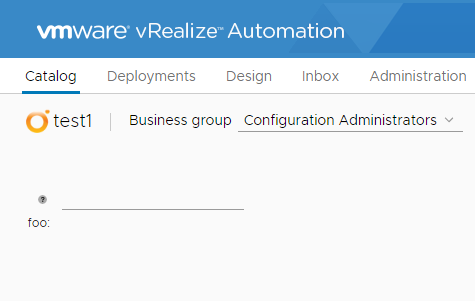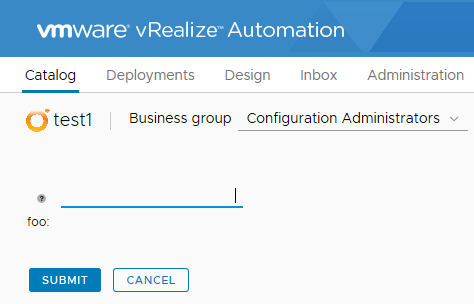UPDATE: Since I wrote this post, VMware have taken down this update because it causes issues with multi-tab XAAS forms. Specifically, it appears that each tab of a XAAS form will submit a request. One of these requests is “real” and will process properly, while the others will error out. As of 24th October, the hotfix is still offline. The issue with Chrome not rendering buttons was resolved in Chrome 76.
Earlier this month, VMware released the first Cumulative Update for vRealize Automation 7.6. The knowledge base article for it is available at https://kb.vmware.com/s/article/70911 The patch file is about 1.1GB.
The first resolved issue in the article is most likely the one that people are experiencing and the easiest to see – “Deployment forms are missing the Submit, Next and Cancel buttons” when viewed in Chrome 75. Below is a comparison of how the form is rendered in Chrome 75 versus Microsoft Edge.
 |
 |
| Chrome 75 rendering | Microsoft Edge Rendering |
This issue by itself is a big showstopper if an organisation uses this functionality. I suspect this update will be a “must have” for them.


